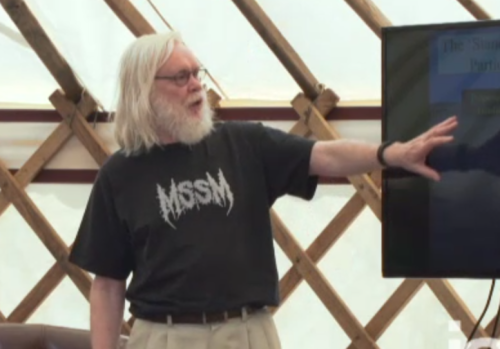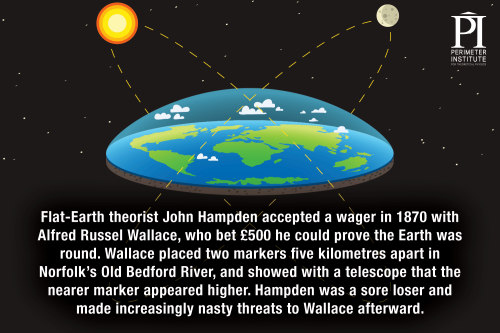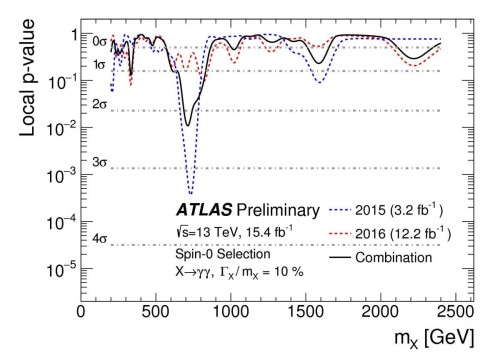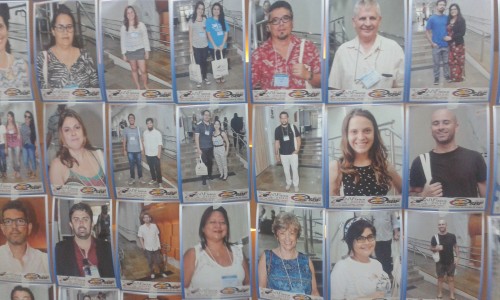Tag archives: CERN
Science, scepticism and fear at the theatre

Sceptical siblings: Olivia Williams (left) and Olivia Colman in Mosquitoes by Lucy Kirkwood. (Courtesy: National Theatre/Brinkhoff & Mogenburg)
By Tushna Commissariat
Working at Physics World for the last six years has taken me to some pretty cool labs – everywhere from CERN to the Laser Interferometer Gravitational-wave Observatory (LIGO). My job has allowed me to meet some quite famous people too…at least in the world of physics, that is. But getting to spend a morning at the National Theatre in London watching Olivia Colman and Olivia Williams rehearse for a play is not usual even for me. That is precisely why I jumped at the chance, when I found out that the pair star as sisters in the recently opened play Mosquitoes.
You may be wondering what a play with that moniker has to do with physics. Mosquitoes tells the story of rational and lucid Alice (played by Williams), a particle physicist at the Large Hadron Collider (LHC), and her often-illogical sister Jenny (played by Colman) “who spends a lot of time Googling” and is easily swayed by the bad science she chances upon. Written by Lucy Kirkwood and directed by Rufus Norris – the National Theatre’s current artistic director, the play follows the siblings through a family tragedy, as well as the fairly disastrous switching on of the LHC in 2008, and takes a hard look at our relationships with science, facts, belief and so much more. Kirkwood, whose previous successes include Chimerica and The Children, was commissioned to write the play by the Manhattan Theatre Club as part of its Alfred P Sloan Foundation initiative, which aims to “stimulate artists to create credible and compelling work exploring the worlds of science and technology and to challenge the existing stereotypes of scientists and engineers in the popular imagination”.
View all posts by this author | View this author's profile
Physics World investigative report bags writing award

Stateside ceremony: Susan Curtis from IOP Publishing (right) picks up the award on behalf of Louise Mayor for her article “Where people and particles collide” from SIPA president Cynthia Carter in Washington DC.
By Matin Durrani
I am delighted to announce that Physics World features editor Louise Mayor has come second in the David Swit Award for Best Investigative Reporting in the 2017 awards from the Specialized Information Publishers Association (SIPA). Louise was recognized for her feature “Where people and particles collide”, which was published in the March 2016 special issue of Physics World on making physics a more inclusive discipline.
The article examined long-standing attempts by members of the LGBT CERN group at the CERN particle-physics lab near Geneva to become an official “CERN Club” – a request that was denied. It also reported how the group had received some negative reception at CERN, as evidenced by a poster-defacement campaign, photos of which were published in the article.
View all posts by this author | View this author's profile
John Ellis on physics after the Higgs boson, calculating the loudness of the Big Bang, the chemistry of ironing

Looking ahead: John Ellis on the future of particle physics. (Courtesy: IAI TV)
By Hamish Johnston
In 2012 particle physicists gave themselves a giant pat on the back when the Higgs boson was discovered at the Large Hadron Collider at CERN – nearly 50 years after it was first predicted to exist. But what have particle physicists done since, and what does the future hold for the field? In a video called “After the Higgs boson: what’s next for 21st century physics?” from the Institute of Art and Ideas, the theoretical physicist John Ellis charts the future course of particle physics. Pay attention for a joke about the UK’s foreign secretary Boris Johnson.
View all posts by this author | View this author's profile
Great wagers in physics, CERN’s pine marten gets stuffed, Doomsday Clock moves closer to midnight

Flat out: Wallace saw him coming. (Courtesy: PI)
By Hamish Johnston
I bet you can’t resist clicking on “Great wagers in physics history” – which has been compiled by Colin Hunter at the Perimeter Institute for Theoretical Physics in Canada. A surprising number involve Stephen Hawking, whose record on winning is quite abysmal according to Hunter. Hawking’s fellow Cantabrigian Isaac Newton also enjoyed a flutter and accepted Christopher Wren’s offer of 40 shillings to anyone who could – in two months – derive a force law that explained Keplers laws of planetary motion. Newton succeeded, but ran overtime so he didn’t collect the cash. In the image above you can read about another wager involving a “flat-Earth theorist”.
View all posts by this author | View this author's profile
Antimatter comes to Brazil
By Matin Durrani in Natal, Brazil
There can’t be many physics experiments to have been visited by members of not one, but two different rock bands. But then there’s something fundamentally captivating about the work of the ALPHA collaboration at the CERN particle-physics lab near Geneva, which is studying the properties of antimatter.
As Jeffrey Hangst from Aarhus University in Denmark revealed in his plenary talk at the 50th anniversary meeting of the Brazilian Physics Society (SBF) yesterday, the ALPHA collaboration has not only played host to a visit from legendary 1970s rockers David Crosby and Graham Nash, but in July also welcomed members of British alternative “space rock” outfit Muse while they were on a visit to CERN.
View all posts by this author | View this author's profile
A horrific nightmare scenario at CERN, surfer wins SUSY bet, and meet the father of the Super Soaker

Surf’s up: Garrett Lisi when he is not winning bets with Nobel laureates. (CC BY-SA 3.0/Cjean42)
By Hamish Johnston
The “nightmare scenario” of particle physics has a new meaning thanks to a bizarre video that appears to have been made by some scientists at CERN. The video seems to have been filmed at night at CERN’s main campus in Geneva and depicts an occult ceremony in which a woman is stabbed. While the video appears to be a spoof and there is no indication that anyone was actually harmed in its making, CERN officials are rightly concerned that such violent scenes were filmed on their premises. “CERN does not condone this type of spoof, which can give rise to misunderstandings about the scientific nature of our work,” a spokesperson told Agence France-Presse.
View all posts by this author | View this author's profile
And so to bed for the 750 GeV bump

No bumps: ATLAS diphoton data – the solid black line shows the 2015 and 2016 data combined. (Courtesy: ATLAS Experiment/CERN)
By Tushna Commissariat
After months of rumours, speculation and some 500 papers posted to the arXiv in an attempt to explain it, the ATLAS and CMS collaborations have confirmed that the small excess of diphoton events, or “bump”, at 750 GeV detected in their preliminary data is a mere statistical fluctuation that has disappeared in the light of more data. Most folks in the particle-physics community will have been unsurprised if a bit disappointed by today’s announcement at the International Conference on High Energy Physics (ICHEP) 2016, currently taking place in Chicago.
The story began around this time last year, soon after the LHC was rebooted and began its impressive 13 TeV run, when the ATLAS collaboration saw more events than expected around the 750 GeV mass window. This bump immediately caught the interest of physicists the world over, simply because there was a sniff of “new physics” around it, meaning that the Standard Model of particle physics did not predict the existence of a particle at that energy. But also, it was the first interesting data to emerge from the LHC after its momentous discovery of the Higgs boson in 2012 and if it had held, would have been one of the most exciting discoveries in modern particle physics.
Dinner that’s out of this world, Higgs pizza and a cosmic symphony
By Michael Banks and Tushna Commissariat
Before setting off to the International Space station (ISS) for six months, UK astronaut Tim Peake revealed that one of the meals he would miss most is the classic British roast dinner. So what better way to celebrate the 44 year old’s safe return to Earth last month than to create a portrait of him made from his favourite nosh? Designed by UK “food artist” Prudence Staite for the Hungry Horse pub chain, the culinary creation took 20 hours to make – you can watch a timelapse video of it being created above. The finished portrait weighed in at 12 kg and says “Welcome Home Tim”. Hungry Horse has even offered Tim and his family free roast dinners for life.
View all posts by this author | View this author's profile
Is the 750 GeV bump in LHC data going away?

End of the line: will science journalists be flocking to CERN in August? (CC-BY/Darkzink)
By Hamish Johnston
Things are heating up in the blogosphere after two A-list physics bloggers have speculated that a tantalizing hint of new physics seen by the CMS and ATLAS experiments at CERN is vanishing now that the latest collision data are being analysed.
The hint is a bump at 750 GeV in the spectrum of photon pairs created when protons collide in the LHC. It is not predicted by the Standard Model of particle physics and has not yet reached a statistical significance of 5σ – the threshold for a discovery. If it turns out to be real, the bump could become one of the most important discoveries in particle physics made so far this century.
View all posts by this author | View this author's profile
Fractals and infinite curves, sonified data and farewell to Sir Tom Kibble
By Tushna Commissariat
Fractals have always fascinated me and I am sure it’s the same for many of you. What I find most intriguing about them is how the relatively simple base pattern, or “seed”, quickly scales up to form the intricate designs we see in a snowflake or a coastline. In the video above, mathematician and animator Grant Sanderson has created a montage of “space filling curves” – theoretically speaking, such curves can endlessly expand without every crossing its own path to fill an infinite space. Following on from these curves, Sanderson shows you just how a simple seed pattern grows into a fractal and also describes how small changes to a seed property – such as an angle in a V – can alter the final image. The above video follows from a previous one Sanderson created on “Hilbert’s curve, and the usefulness of infinite results in a finite world” so check them both out.
View all posts by this author | View this author's profile
